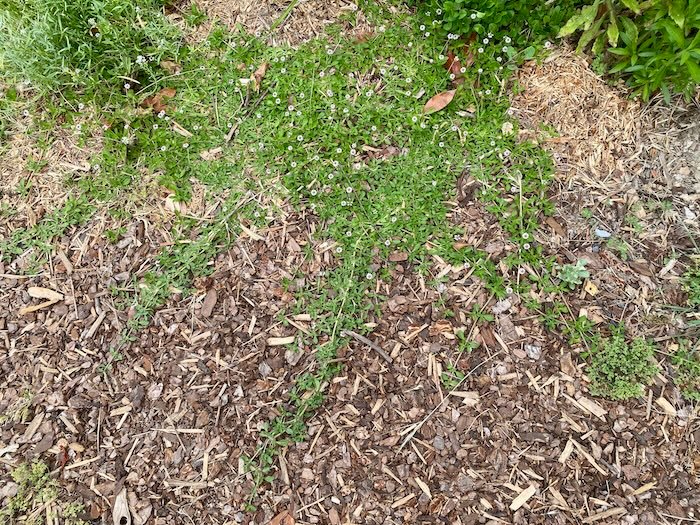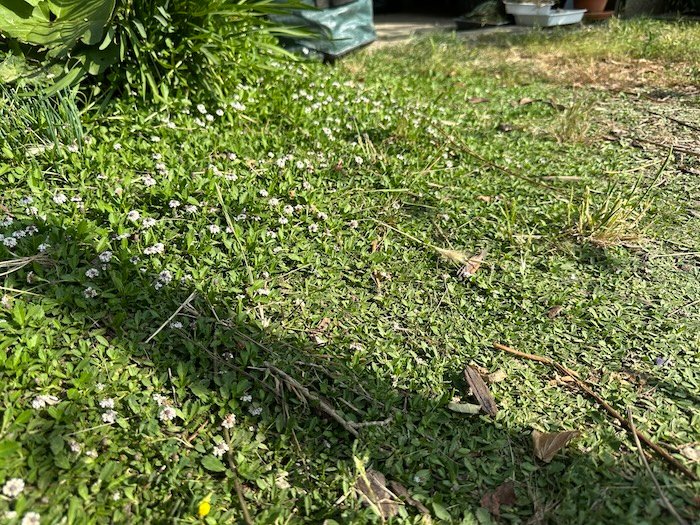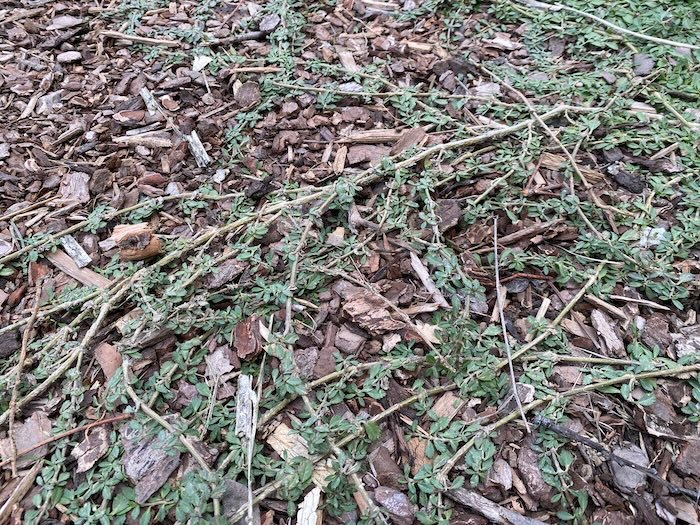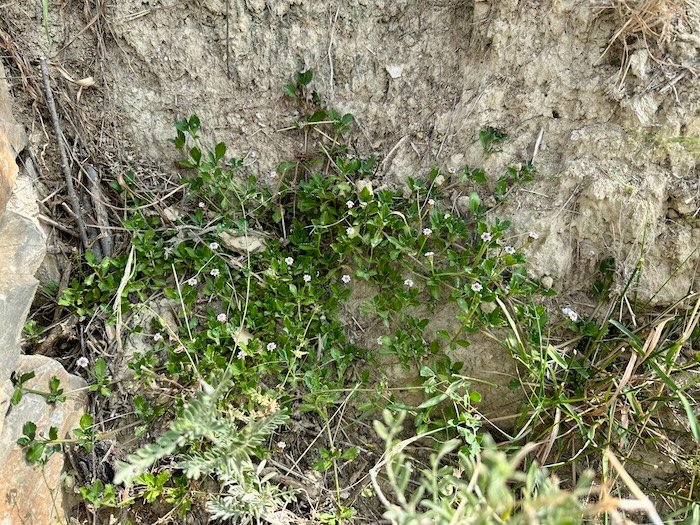I am officially in love and over the moon with Phyla nodiflora! I first noticed this tiny plant along one of my walking routes, greening and blooming prettily all summer long, regardless of heat and drought, along an asphalt road through the vineyards.
I figured even then it must be the perfect lawn substitute and ground cover but since Filippi gives it only a code de secheresse of 3, I hesitated for a while. Finally, in March of 2024, I bought three small plants in a garden center and dug out some others in the wild. I planted the three from the garden center in front of the rhubarb corner, the others here and there in the garden.
So far my experiment has turned out wonderfully. The three small plants in front of the rhubarb corner have taken less than one year to form a lush, green carpet of 2m2 that I walk on practically every day. The others, planted here and there, disappeared after planting, but have reappeared in the winter, and are now spreading out as well. Last fall I bought some more and tried them vertically on our steep embankment and that works as well.
Phyla nodiflora grows in full sun or half-shade, in any ordinary, well-drained soil, tolerating chalk as well as salt.
It grows very densely and needs no weeding once the ground is covered. Height will be about 5cm (spreading stems can appear to be higher when leaning against other plants) to a with of about 60 cm.
It spreads vigourously by rooting its stems to the earth, so it is potentially invasive of other plants’ space. However it is easy to pull it up and pull it out or cut it off, where it’s not wanted.
Phyla nodiflora forms a lush green carpet from spring through fall, tolerating intensive walking and even occasional driving (like on a parking spot). In winter most of the foliage disappears and the bare ground-rooted stems show.
It blooms from June through September. Bees supposedly like the flowers, but I haven’t seen an abundance of bees on mine. I would still not walk barefoot on it but the flowers could also easily be trimmed with a string trimmer or lawn mower with a spiral blade.
It is frosthardy to -12℃.
And it is exceedingly easy to propagate. I’ve put summer cuttings in water and roots appeared within 1-2 days roots!
Watering or Not Watering?
Filippi writes that in our region one deep watering (15l per m2) every 15 days should suffice to keep Phyla nodiflora as a nice green carpet. He also writes that a well-established plant can sustain long periods of drought, but may lose some foliage.
None of mine have ever received any extra watering beyond a few weeks after planting. All of them are perfectly fine with just the water they get from rain or with some of the water that the plants next to them may receive.
More information
Note on the name: For non-botanists it is hard to say if the plant is called Phyla canescens or Phyla nodiflora or both. It does belong in the Verbena family and seems to be a native of South American grasslands, but has spread to many other parts of the world as an agricultural weed and is considered an invasive plant in Australia.





Leave a Reply